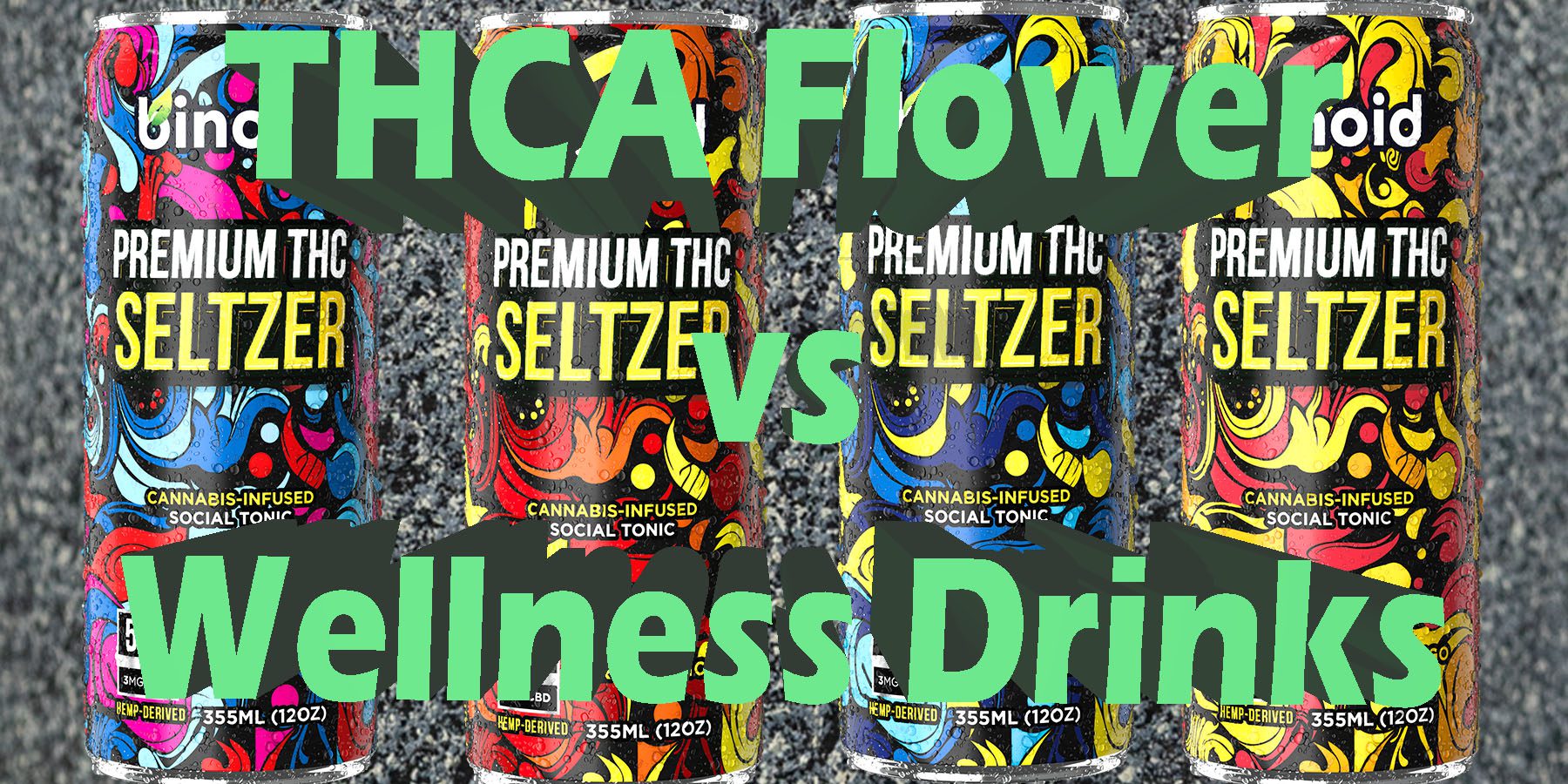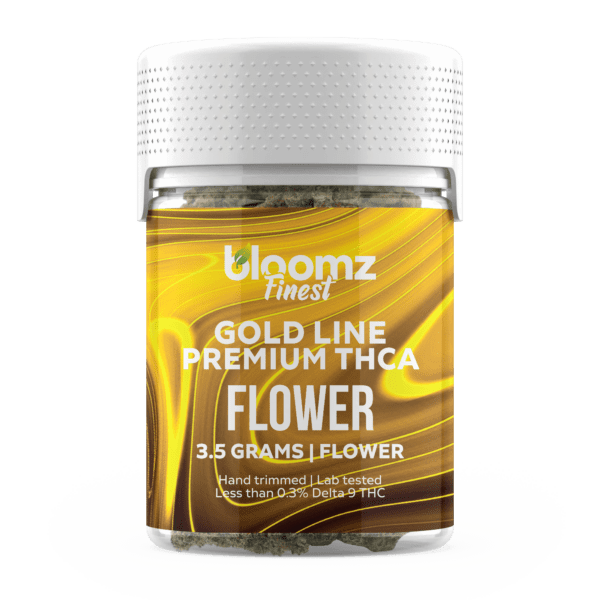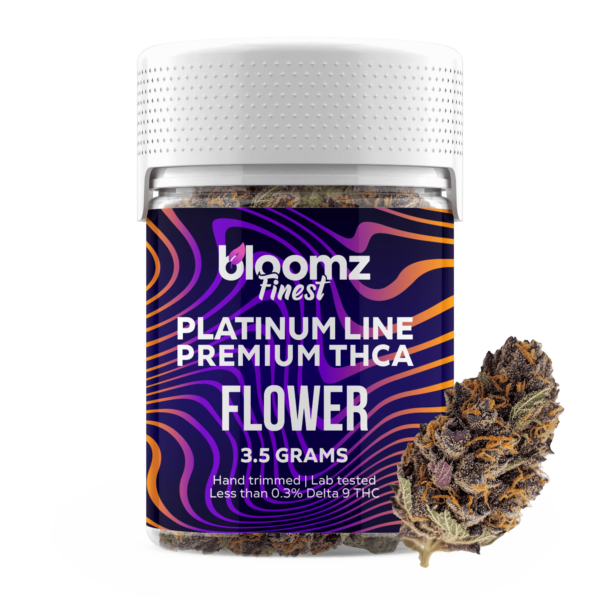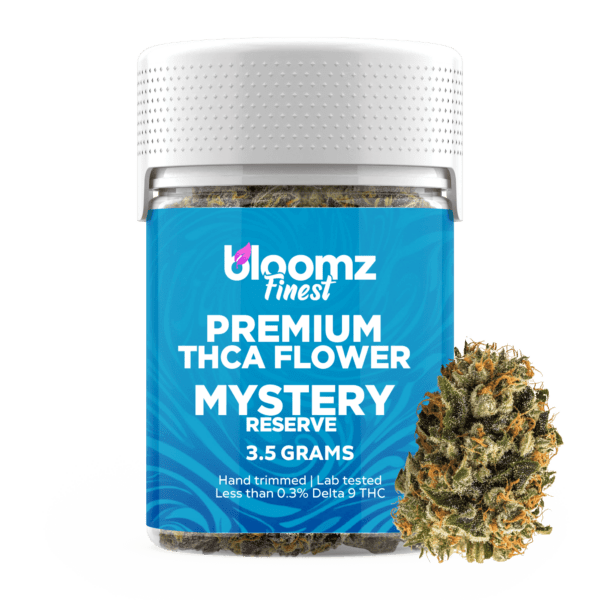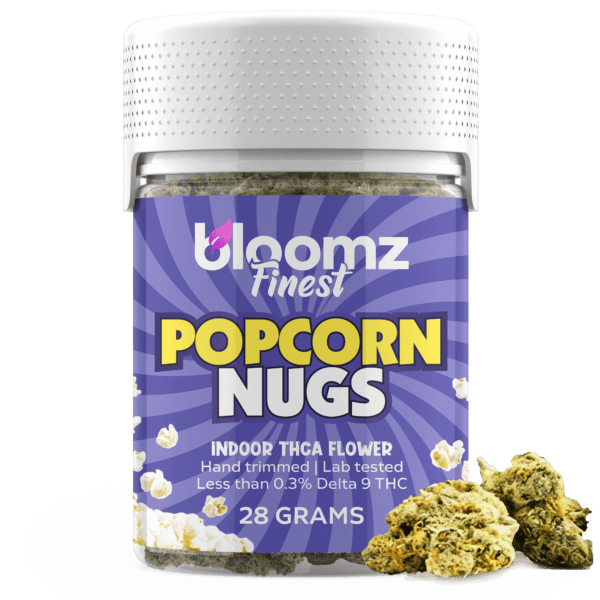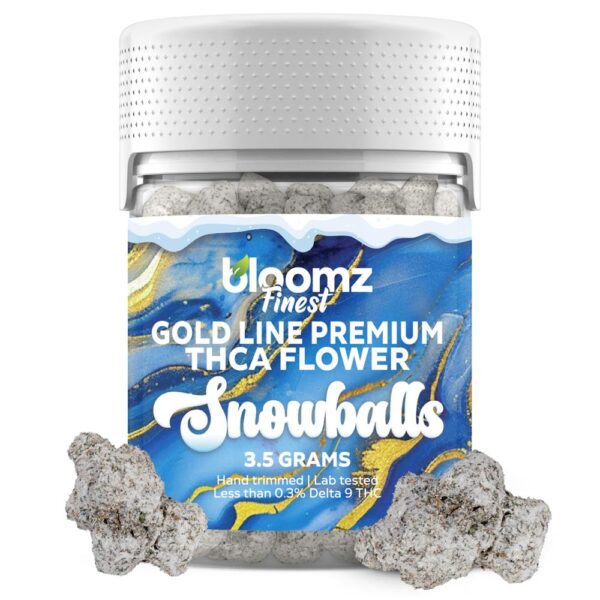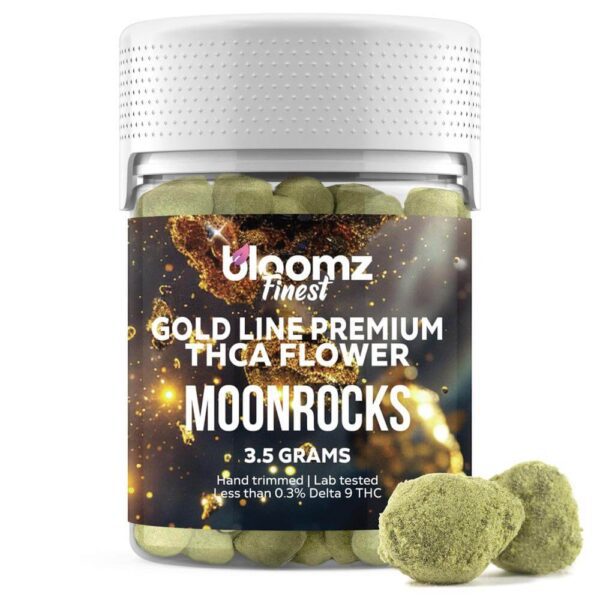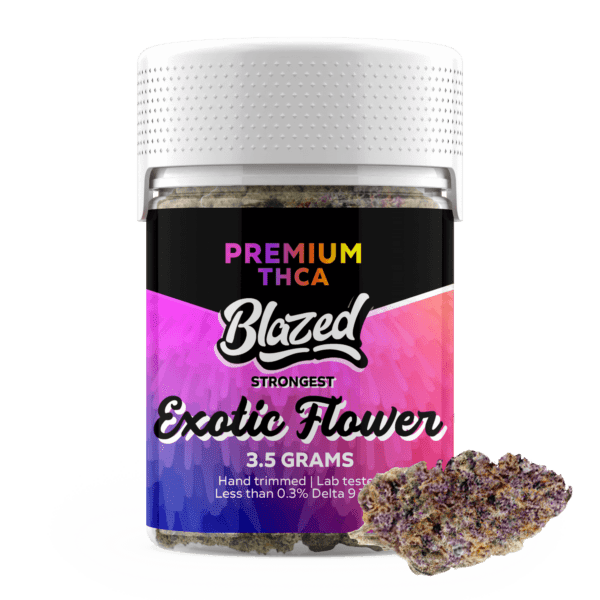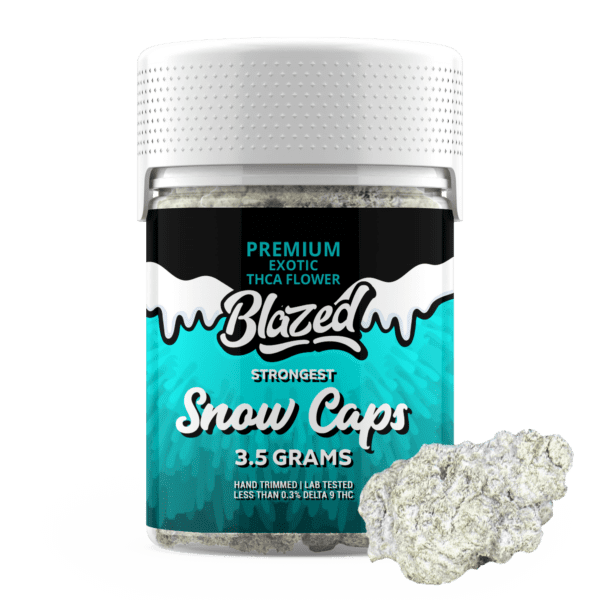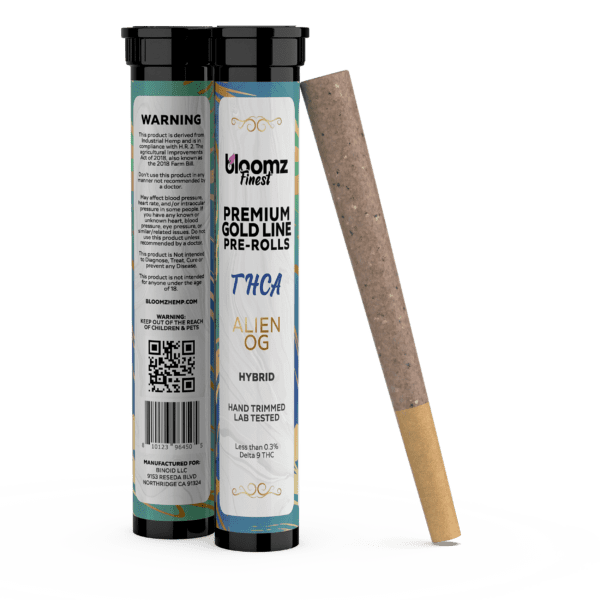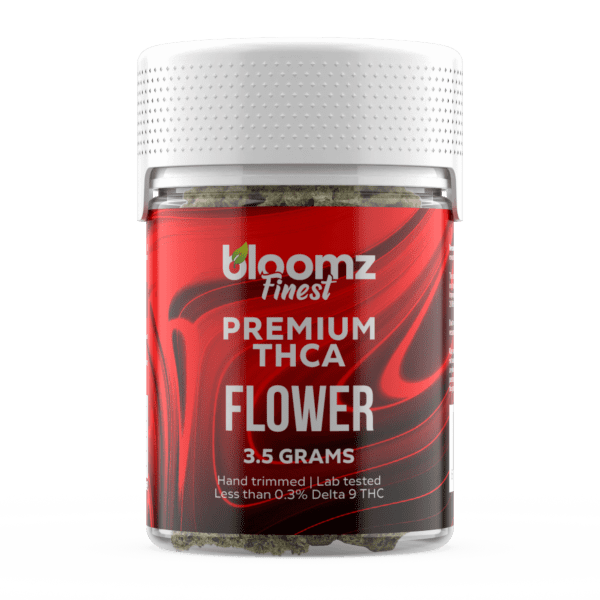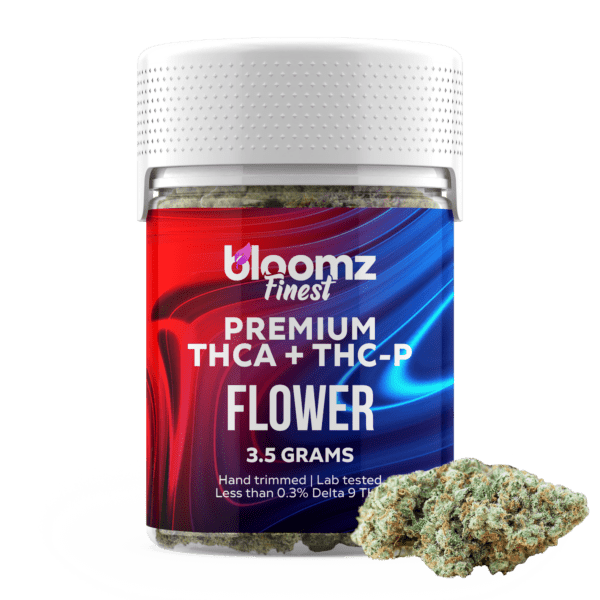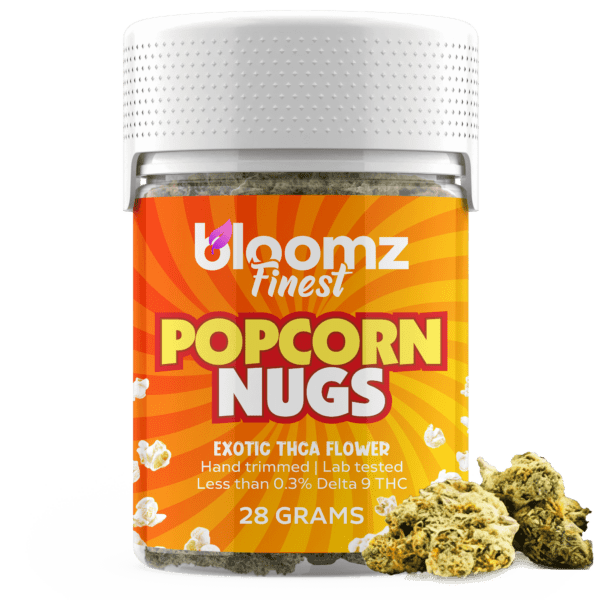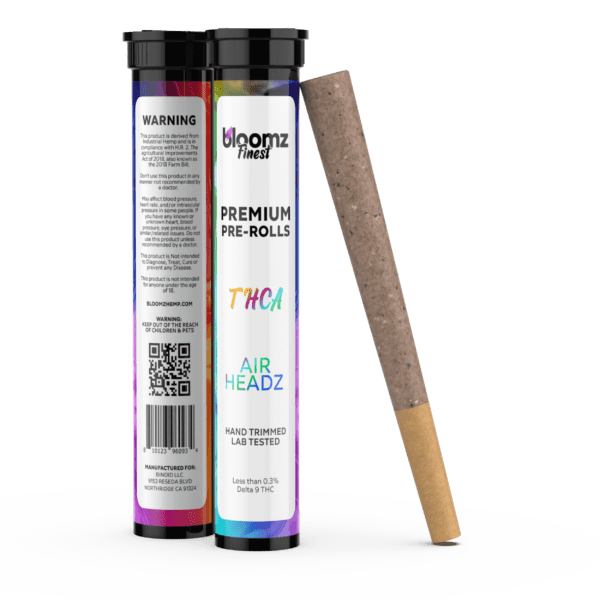In the ever-expanding universe of personal wellness, the choices we make often reflect a deeper preference for how we interact with the world around us. A fascinating parallel can be drawn to the elements themselves, presenting a choice between the tangible earthiness of a raw botanical and the fluid, refreshing nature of a carefully crafted liquid. This is the essential decision point when comparing the aromatic, crystalline buds of THCA flower with the vibrant and convenient world of wellness-intended pre-packaged drinks and beverages.
One path invites you to engage with the elements of earth and air—a dry, fragrant plant that is transformed by heat and breath into an immediate experience. The other path invites you to embrace the element of water—a hydrating, flavorful, and socially seamless experience that flows through the body in a different rhythm. To choose between them is to decide not just on a product, but on the very texture and tempo of your moment of relaxation and enjoyment.
To Buy THCA Flower Click Here
Recommended products
-
THCA Flower – Indoor Exotics – Gold Line
$37.99$69.99 -
THCA Flower – Platinum Line
$49.99$79.99 -
THCA Flower – Mystery Reserve
$41.99$79.99 -
THCA Smalls
$149.99$256.99
Why It’s Important to Breakdown the Matchup of THCA Flower vs. Wellness-Intended Pre-Packaged Drinks & Beverages
In a marketplace brimming with innovation, a detailed comparison between two vastly different modalities like THCA flower and infused beverages is more than just a consumer guide; it’s a necessary exploration of modern wellness philosophies. The juxtaposition of a traditional, raw agricultural product against a technologically advanced, ready-to-drink liquid formulation highlights the incredible breadth of options now available. By meticulously dissecting the attributes of each—from the science of their absorption and the social contexts they inhabit, to the very nature of the experience they offer—we can provide clarity in a crowded field.
This breakdown serves as a compass for consumers, helping them navigate the choice between the ancient ritual of smoking and the modern act of sipping, ensuring their selection is a conscious one that aligns perfectly with their lifestyle, social habits, and desired outcomes:
Distinct Mechanisms and Timelines of Effects: The most profound difference lies in how the body processes these two forms, which creates two completely different experiential timelines. THCA flower, consumed through inhalation, offers a direct route to the bloodstream via the lungs. This bypasses the digestive system entirely, leading to an incredibly rapid onset of effects, typically within minutes. This immediacy allows for a high degree of in-the-moment control. Infused drinks and beverages, while still a form of edible, behave differently than their solid counterparts. Thanks to advanced technologies like nanoemulsion, the active ingredients are made water-soluble and can be absorbed more quickly by the body—some even beginning sublingually in the mouth. This can lead to a much faster onset than solid edibles (sometimes as quick as 15-30 minutes), yet it is still significantly slower than inhalation. The duration is also unique, often lasting longer than smoking but shorter than a solid edible, creating its own distinct experiential curve.
Social Integration: The Private Ritual vs. The Public Refreshment: The social context in which these products are used could not be more different. THCA flower, with its requisite paraphernalia and distinct, potent aroma, is fundamentally a private experience. Its use is often a deliberate, solitary ritual or something shared among a small, familiar group in a comfortable, non-public setting. Pre-packaged drinks and beverages, on the other hand, are the epitome of social integration. Holding a can or bottle is one of the most universally accepted and inconspicuous social behaviors. This allows infused beverages to seamlessly blend into almost any social setting—from a backyard barbecue to a night out with friends—offering a sophisticated, discreet, and often non-alcoholic way to partake and socialize without drawing any attention.
The Philosophy of Formulation: Raw Plant vs. Liquid Science: This matchup presents a choice between the singular and the scientifically formulated. THCA flower is a single-ingredient product in its most unadulterated form, appealing to purists who value a direct connection to the plant. The experience is defined by the natural genetics and cure of that specific flower. An infused beverage is a marvel of modern food science. It is a complex liquid formulation that requires advanced technology to solve the fundamental problem of mixing oil-based cannabinoids with water. This involves processes like nanoemulsion, along with a carefully balanced recipe of flavorings, sweeteners, acidulants, and preservatives to create a stable, homogenous, and delicious final product. The choice is between the raw simplicity of nature and the refined precision of liquid engineering.
Legal and Regulatory Considerations: While both product categories often operate under the 2018 Farm Bill, their forms create different regulatory and practical landscapes. For THCA flower, the legal status hinges on its Delta 9 THC concentration by dry weight. For infused beverages, the same 0.3% Delta 9 THC limit applies to the total weight of the liquid, which allows for a specific, calculable milligram dose per can or bottle. This makes dosing for beverages extremely precise from a manufacturing standpoint. However, the use of emulsion technologies to increase bioavailability can also attract regulatory scrutiny, and ensuring the long-term stability of the cannabinoid emulsion within the liquid is a major focus for manufacturers to guarantee the product remains consistent and compliant over its shelf life.
Intent and Purpose: Botanical Exploration vs. Social Lubrication: The underlying intent of the user often diverges significantly between these two options. A user choosing a specific strain of THCA flower is often a connoisseur, interested in exploring the unique aromatic bouquet of terpenes and the nuanced effects of that particular cultivar. The experience is centered on the appreciation of the plant itself. A person choosing an infused beverage is often seeking something different. They may be looking for a refreshing drink, a precise and predictable dose for wellness, or, most significantly, an alternative to alcoholic beverages in a social setting. The purpose is often functional and social—hydration, relaxation, and integration—with the beverage serving as a sophisticated and enjoyable vehicle for the active ingredients.
Contender #1: THCA Flower
THCA flower has gracefully risen to prominence in the modern botanical marketplace, capturing the imagination of a diverse spectrum of consumers with its unique blend of traditional appeal and innovative legal standing. It represents the raw, unbridled essence of the cannabis plant, presented in its most authentic and elemental form. This crystalline-dusted flower is the direct result of meticulous cultivation, a testament to the art of nurturing a plant to preserve its natural, unaltered state.
One can think of it as a key waiting for its lock; it holds a vast reservoir of potential for a vibrant experience, a potential that is only realized through the simple, transformative act of applying heat. For many, the allure of THCA flower lies precisely in this suspended potential—the pure, unadulterated plant, teeming with a full spectrum of aromatic compounds, offering a profound and tangible connection to its agricultural roots. To choose THCA flower is to choose an interactive experience, a hands-on ritual that is as much a part of the journey as the ultimate destination.
To fully grasp the concept of THCA flower, one must first become acquainted with its namesake molecule: Tetrahydrocannabinolic acid (THCA) – the non-intoxicating, acidic cannabinoid that serves as the direct biosynthetic precursor to the far more famous Delta 9 THC. In the living biology of the cannabis plant, cannabinoids are primarily synthesized and stored in these acidic forms. In many popular cannabis varieties, THCA is by far the most abundant compound. The critical distinction between the THCA molecule and its Delta 9 THC counterpart is a small, appended molecular structure called a carboxyl group. While seemingly insignificant, this carboxyl group fundamentally alters the molecule’s three-dimensional geometry, making it too large and misshapen to effectively bind with the CB1 receptors in the brain and central nervous system.
This specific molecular binding is the primary mechanism that produces the signature euphoric effects of THC. Therefore, in its raw, native state, THCA is not intoxicating. The remarkable transformation occurs through a process known as decarboxylation. When heat is applied, this extra carboxyl group is released, and the THCA molecule is instantly converted into the psychoactive, receptor-friendly Delta 9 THC, thereby unlocking its well-known effects.
With this scientific context, THCA flower can be clearly defined as cannabis flower that has been expertly bred and meticulously cultivated to produce an exceptionally high concentration of THCA, while ensuring that the naturally occurring levels of Delta 9 THC remain below the 0.3% legal threshold established by federal law. To all the human senses—sight, smell, and touch—this flower is virtually identical to traditional high-THC cannabis. It exhibits the same dense bud structures, the same sticky coating of resinous trichomes, and the same complex and pungent aromas. This is because, botanically, it is the exact same plant. The crucial difference is its specific chemical profile, or chemotype, which is achieved through a combination of masterful genetic selection and a painstaking post-harvest protocol designed to preserve the integrity of the THCA molecule and prevent its premature conversion.
The production of this premium, legally compliant flower is a sophisticated agricultural endeavor, a multi-stage process where every detail is paramount to the final quality:
Foundational Genetic Selection: The entire journey from seed to sale begins with the selection of elite genetics. Highly skilled breeders dedicate years to identifying and stabilizing cannabis cultivars that naturally exhibit a high-THCA, low-Delta 9 THC expression. This often involves a lengthy process of phenotype hunting within a given seed stock and then cross-breeding the most promising candidates over multiple generations to solidify the desired traits. The ultimate goal is to create a robust and reliable genetic line that not only meets the stringent legal requirements but also produces the desirable aesthetic and aromatic qualities that consumers demand, such as a unique terpene profile, dense bud structure, and exceptional trichome production.
Meticulous and Controlled Cultivation: Once the ideal genetics are secured, the plants are typically cultivated in highly controlled indoor or mixed-light greenhouse environments. This approach gives the cultivator complete authority over every aspect of the plant’s life, including the spectrum and intensity of the lighting, the precise composition of the nutrient solution, the ambient temperature and humidity, and the levels of atmospheric CO2. By fine-tuning these variables, growers can steer the plant’s metabolic energy toward the production of cannabinoids and terpenes, maximizing the potency and quality of the final harvest while minimizing environmental stressors that could negatively impact the crop.
Strategic and Timely Harvesting: The timing of the harvest is not a matter of guesswork; it is a critical decision based on scientific observation at a microscopic level. Growers use magnifying tools to closely examine the trichomes—the tiny, crystalline glands on the flower’s surface that function as miniature cannabinoid and terpene factories. The optimal harvest window is determined by the appearance of these trichomes. The goal is to harvest when the majority of trichome heads have turned from a clear color to a milky or cloudy white, which indicates the peak concentration of THCA. Harvesting too soon can result in a less potent product, while harvesting too late can lead to the degradation of cannabinoids and a less desirable effect profile.
The Patient Art of Drying and Curing: The post-harvest phase is where a good product is transformed into a great one. After harvesting, the plants are hung to dry in a dark, cool, and climate-controlled environment for a period of one to two weeks. This slow drying process is essential for preserving the delicate and volatile terpenes that are responsible for the flower’s aroma and flavor. Once dried, the manicured buds are placed into airtight containers for the curing stage, which can last from several weeks to several months. This curing process, which involves regularly “burping” the containers to release moisture, not only enhances the smoothness and flavor of the final product but is also crucial for preventing the THCA from converting into Delta 9 THC, thus ensuring the flower remains compliant with federal law.
Unyielding Commitment to Compliance Testing: The final step before any THCA flower can be offered to consumers is mandatory third-party laboratory testing. A representative sample from each harvested batch is sent to an independent, state-accredited laboratory for a comprehensive analysis. The lab produces a Certificate of Analysis (COA), which is a detailed report that provides an unbiased breakdown of the flower’s cannabinoid content. This document serves as the ultimate proof of legality, verifying that the Delta 9 THC concentration is at or below the 0.3% federal limit. The COA also confirms the high percentage of THCA, providing consumers with complete transparency and the confidence that they are purchasing a safe, potent, and legal product.
The market for THCA flower is a remarkably rich and varied landscape, offering a wide array of product types and quality tiers designed to meet the needs of every kind of consumer. This diversity reflects the incredible advancements in cannabis cultivation and processing, allowing individuals to choose products based on their specific preferences for potency, flavor, convenience, and budget. From pristine, indoor-grown buds to powerful, artisanally crafted concentrates, the options are plentiful. A clear understanding of these different categories is essential for anyone looking to navigate the market effectively and find the perfect product to match their personal taste and desired experience:
Indoor THCA Flower: Widely considered the gold standard in cannabis cultivation, indoor-grown flower is produced in a completely sealed and meticulously controlled environment. Every single variable, from the light cycles and spectrum to the nutrient delivery and atmospheric conditions, is managed with scientific precision. This results in a product of exceptional consistency and quality. Indoor buds are typically characterized by their flawless visual appeal, often referred to as “bag appeal,” featuring dense structures, vibrant colors, and a thick, frosty coating of trichomes. The sealed environment also preserves the volatile terpenes, leading to an intensely pungent aroma and a rich, complex flavor profile that is true to the strain’s genetics.
Outdoor THCA Flower: Cultivated under the natural power of the sun in open-air fields, outdoor flower offers a different kind of charm. These plants often grow much larger than their indoor counterparts, resulting in higher yields and making outdoor flower a more budget-friendly option. Proponents of “sun-grown” cannabis argue that the full, natural spectrum of sunlight fosters a more complex and robust cannabinoid and terpene profile, a concept linked to terroir, where the unique environment imparts distinct characteristics to the plant. While outdoor buds may be less cosmetically perfect, they can offer a wonderfully rich, natural, and potent experience.
THCA Smalls: A fantastic option for the value-conscious consumer, “smalls” are not a separate strain or quality level but simply a smaller bud size. These popcorn-sized nugs typically come from the lower branches of the same high-quality plants that produce larger top colas. They possess the same genetics, potency, and terpene profile as their larger counterparts but are sorted out during the trimming process and sold at a discount. For consumers who prioritize the quality of the materialover the cosmetic size of the buds, smalls offer an excellent way to enjoy premium flower at a more accessible price.
THCA Nugs: “Nug” is a common slang term for a single, trimmed bud of cannabis flower. When a product is marketed as THCA nugs, it generally refers to the prime, standard-sized buds from a harvest. These are the desirable, well-formed flowers that represent the main product of a grower’s efforts and are what most people envision when they think of high-quality cannabis.
THCA Snowballs/Snow Caps: This is a high-potency, specialty product created for those seeking an elevated experience. The process involves taking a premium nug of THCA flower and coating it in pure THCA isolate. This isolate is a fine, white, crystalline powder that is nearly 99% pure THCA. The resulting bud appears as if it has been rolled in a layer of fresh snow, hence the name. This external coating dramatically increases the overall THCA percentage, creating an exceptionally potent product.
THCA Moonrocks: Taking enhancement to the next level, THCA moonrocks are a potent trifecta of cannabis products. A high-quality nug of THCA flower is first coated in a sticky layer of cannabinoid concentrate or distillate, and then rolled in a thick layer of kief (sifted trichomes). This multi-layered creation results in a product that is incredibly dense, slow-burning, and extraordinarily potent, with THCA levels that far exceed what is naturally possible in the flower alone.
THCA Pre-Rolls, Blunts & Joints: For those who value convenience above all else, pre-packaged options are ideal. Pre-rolls consist of ground THCA flower that has been professionally packed into rolling papers (joints) or hemp wraps (blunts), ready to be consumed straight out of the package. This eliminates the need for any preparation or paraphernalia, making them a simple, portable, and accessible way to enjoy THCA flower.
Exotic THCA Flower: The term “exotic” in the cannabis world denotes strains that are rare, unique, or on the cutting edge of breeding. These are often boutique, small-batch genetics prized for their distinctive characteristics, such as unusual colors, novel aroma profiles (like candy or baked goods), and unique bud structures. Exotic strains represent the “designer” tier of the flower market, highly sought after by connoisseurs.
AA Exotic THCA Flower: The informal “A-grade” system is a common way to rate flower quality. AA, or “dubs,” generally refers to a mid-grade product. While still enjoyable, it may have some minor imperfections, such as being less dense or having a less pronounced aroma than higher grades. It represents a budget-friendly entry into the world of exotic strains.
AAA Exotic THCA Flower: Known as “trips,” AAA is the modern standard for high-quality, top-shelf flower. A AAA-grade bud will be visually appealing, with a good density, visible trichome coverage, and a strong, pleasant aroma. It provides a smooth, flavorful, and potent experience and represents the vast majority of high-quality flower on the market.
AAAA Exotic THCA Flower: The pinnacle of quality, AAAA or “quads,” is reserved for the absolute best of the best. This is connoisseur-grade, craft flower that excels in every metric. AAAA buds are perfectly cured, impeccably trimmed, and so thoroughly covered in trichomes that they appear frosty. Their aroma is exceptionally pungent and complex, and the experience is supremely smooth, flavorful, and potent, representing the highest expression of the strain’s genetic potential.
The vast and diverse world of cannabis genetics is traditionally organized into three main categories: Indica, Sativa, and Hybrid. These classifications have long served as a crucial shorthand for consumers, helping to describe a strain’s lineage, its physical characteristics, and most importantly, the general nature of the experience it is likely to produce. While modern science has shown that a strain’s unique profile of aromatic compounds, or terpenes, is a more accurate predictor of its effects than its Indica/Sativa heritage alone, these categories remain an incredibly useful and widely understood tool for navigating the myriad options of THCA flower.
Choosing a strain is about curating an experience, and understanding these fundamental types is the first step in finding the perfect match for a desired mood or activity:
Indica: Originating from the mountainous regions of the Hindu Kush, Indica plants are characterized by their short, bushy stature and broad, dark green leaves, adaptations to their colder, harsher native climates. In terms of effects, Indica strains are renowned for their association with profound feelings of physical relaxation and tranquility. The experience is often described as a “body high,” a sense of calming ease that can feel as though it is melting through the limbs and soothing tension. Because of these deeply relaxing qualities, Indica strains are overwhelmingly preferred for evening and nighttime use, perfect for unwinding after a long day, settling into a comfortable chair with a movie, or preparing for a restful night. Common terpenes found in Indica-dominant strains include myrcene, which has an earthy, musky aroma and is thought to contribute to the relaxing effects, as well as linalool and caryophyllene.
Sativa: Sativa plants evolved in the warmer, equatorial regions of the world like Southeast Asia and Central America. As a result, they grow tall and lanky, with narrow, light green leaves, a structure designed to thrive in sunny, humid climates. The effects of Sativa strains are often described as being the polar opposite of Indicas. They are renowned for producing an uplifting, cerebral, and energizing experience that is felt more in the mind than in the body. Consumers often report feelings of enhanced creativity, focus, and sociability, making Sativas a popular choice for daytime activities, creative projects, social gatherings, or any situation where a boost of cheerful energy is desired. The terpene profiles of Sativas frequently feature limonene, which has a bright citrus aroma, pinene, with its fresh pine scent, and terpinolene, known for its complex fruity and floral notes.
Hybrid: In today’s sophisticated breeding landscape, the vast majority of strains available on the market are technically Hybrids. These strains are created by cross-breeding Indica and Sativa plants to create offspring that inherit traits from both parent lineages. The goal of creating a Hybrid is to combine the desirable characteristics of different strains into one superior plant. This could mean pairing the relaxing body effects of an Indica with the cerebral uplift of a Sativa, or breeding for a specific flavor profile or growth characteristic. Hybrids can be Sativa-dominant, Indica-dominant, or a balanced “50/50” mix, and they offer the widest spectrum of potential effects. This versatility is what makes them so popular, as they can be tailored to suit almost any preference or occasion, offering the “best of both worlds.”
The legal status of THCA flower in the United States is one of the most talked-about and nuanced subjects in the entire cannabinoid industry. Its existence and availability are a direct result of the specific language used in the 2018 Farm Bill. This landmark piece of federal legislation officially descheduled hemp from the Controlled Substances Act and created a legal definition for it: any part of the Cannabis sativa L. plant with a Delta 9 THC concentration of not more than 0.3 percent on a dry weight basis.
This distinction is critical. The law specifically singles out Delta 9 THC as the regulated compound. Since THCA flower is cultivated to have high levels of THCA but compliant, low levels of Delta 9 THC, it legally qualifies as hemp under this federal definition. This has opened the door for its production and sale across many parts of the country. However, the situation is not entirely straightforward and is subject to evolving interpretations and state-level regulations, creating a complex legal patchwork that consumers must be aware of.
Some states have passed their own laws that look at “total THC”—a figure calculated by adding the Delta 9 THC content to the potential Delta 9 THC that can be converted from THCA (THCA % x 0.877). In states that use a total THC standard, high-THCA flower may be considered illegal, even if its Delta 9 THC content is below the federal 0.3% limit. This makes it imperative for consumers to research and understand the specific laws in their own state before purchasing or possessing THCA flower.
The versatility of THCA flower is one of its most compelling attributes, allowing users to tailor their consumption method to fit their preferences, tools, and desired experience. Because the conversion of THCA to Delta 9 THC requires heat, the methods of use are centered around the process of decarboxylation. This action can be performed quickly through combustion or vaporization, or more slowly in an oven for making edibles. Each method provides a distinctly different experience in terms of onset, duration, flavor, and overall feel, giving consumers a wonderful degree of control over their journey with the plant:
Vaping (using a portable or desktop vaporizer): Vaporizing is an increasingly popular method that is considered by many to be a more refined alternative to smoking. A vaporizer heats the flower to a temperature that activates the cannabinoids (decarboxylation) without combustion. This avoidance of burning the plant material is key. It results in a much smoother and cleaner experience that is less harsh on the lungs. Furthermore, because terpenes are preserved at these lower temperatures, vaping allows the user to experience the full, nuanced flavor profile of their chosen strain. Portable vaporizers offer discretion and on-the-go use, while powerful desktop units can provide even more potent and flavorful vapor clouds in a home setting.
Smoking: This is the most traditional and widely recognized method of consuming cannabis flower. It involves combusting the plant material and inhaling the resulting smoke. This can be done using a variety of tools, including pipes, bongs, joints, or blunts. Smoking provides an immediate onset of effects, which many users appreciate for its ritualistic nature and instant feedback. The high heat of combustion, however, can destroy some terpenes and cannabinoids, which can alter the flavor profile compared to vaping. Despite this, the simplicity, ritual, and powerful effects of smoking ensure it remains a cherished and popular method for consuming THCA flower.
Cooking/Baking: For those who wish to avoid inhalation altogether, THCA flower can be used to create potent and long-lasting homemade edibles. However, this requires a crucial preparatory step. The flower must first be decarboxylated by grinding it up and baking it in an oven at a low temperature (around 220-240°F or 105-115°C) for about 30-45 minutes. This gentle heating process converts the THCA into Delta 9 THC, “activating” the flower. After decarboxylation, the flower can be infused into a fat, such as butter or oil, which is then used as an ingredient in any number of recipes, from cookies and gummies to savory sauces and dressings, including the infused beverages that represent the other contender in this matchup.
The effects of THCA flower are a direct result of its transformation when heated. In its raw, unheated form—for example, if one were to ingest the bud directly without heating it—it is essentially non-intoxicating, as the THCA molecule does not readily activate the body’s cannabinoid receptors. The entire experience associated with THCA flower is contingent on the process of decarboxylation. When the flower is heated through vaping, smoking, or baking, the THCA rapidly converts into Delta 9 THC, the compound renowned for its capacity to produce feelings of euphoria, bliss, and deep relaxation.
Once inhaled or ingested and metabolized, this newly formed Delta 9 THC interacts with the endocannabinoid system (ECS), leading to a wide range of potential effects that can be both mental and physical. Users may experience a shift in perception, a heightened appreciation for sensory input like music or food, a surge of creative energy, or a profound sense of calm and contentment. The specific nature of this experience is incredibly variable and is influenced by the strain’s unique profile of cannabinoids and terpenes (the entourage effect), the dosage, the user’s individual tolerance and metabolism, and the method of consumption.
Pros & Cons
Like any product, THCA flower comes with its own distinct set of advantages and disadvantages. These characteristics are essential to weigh when determining if it is the right choice for your personal needs and lifestyle. The pros often center on its natural form and the control it offers the user, while the cons tend to relate to its practical application and discretion.
Pros:
A Pure and Natural Product: One of the most significant advantages of THCA flower is that it is a single-ingredient, plant-based product. For those who prioritize natural wellness, the appeal of using a flower in its relatively unprocessed state is immense. It is free from the additives, sugars, binding agents, and artificial flavorings that are necessary components of formulated products, offering a direct and unadulterated connection to the plant.
The Full-Spectrum Entourage Effect: THCA flower contains not just THCA, but a complete, naturally occurring symphony of other cannabinoids (like CBGA and CBDA), flavonoids, and, most importantly, terpenes. This rich chemical profile allows users to experience the “entourage effect,” a theory suggesting that all these compounds work together synergistically to enhance and modulate the overall experience, creating a more nuanced and holistic effect than a single isolated compound could provide on its own.
Fast-Acting Effects for Immediate Feedback: When THCA flower is inhaled via smoking or vaping, the effects are felt almost instantaneously, typically within a matter of minutes. This fast-acting nature is highly beneficial as it provides immediate feedback, allowing the user to carefully gauge the effects in real-time. This makes it much easier to find the right dosage and avoid overconsumption, as one can simply take a single puff and wait before deciding to have more.
Complete Control Over the Experience: Flower offers a superior level of control over the consumption session. Users can decide exactly how much to use, from a small pinch to a full bowl. The ability to titrate the dose puff-by-puff provides a level of precision in the moment that is impossible with edibles. This granular control is ideal for those who want to dial in a very specific level of effect for their desired experience.
A Rich Sensory Journey: The experience of using high-quality THCA flower is a feast for the senses. The visual appeal of a crystalline, well-structured bud, the tactile pleasure of handling it, and most of all, the complex and diverse world of aromas and flavors created by terpenes, make it a deeply engaging experience. For many, this aromatic and flavorful journey is a primary and cherished part of the overall ritual.
Unmatched Versatility in Consumption: THCA flower is remarkably versatile. The same product can be used in a multitude of ways depending on the user’s preference at any given moment. It can be vaped for a smooth, flavorful session, smoked for a traditional and potent ritual, or used as the base ingredient to create homemade edibles of all kinds, including infused beverages, for a long-lasting, smoke-free experience.
Federal Legality (Under Farm Bill): Thanks to its specific chemical profile—high in THCA but low in the federally regulated Delta 9 THC—THCA flower occupies a unique legal space. Under the 2018 Farm Bill, it qualifies as legal hemp, making it accessible in many states where traditional high-THC cannabis is not. This has opened up a pathway for many individuals to legally access high-quality cannabis flower.
Strain-Specific and Curated Effects: The ability to choose from a vast library of different strains is a major advantage. Whether one is seeking the uplifting and energetic feelings associated with a Sativa, the deep relaxation of an Indica, or the balanced effects of a Hybrid, there is a strain to match nearly any desired mood or activity. This allows for a highly personalized and curated experience.
The Enjoyment of the Ritual: For many users, the process is just as important as the outcome. The hands-on ritual of selecting a nug, grinding the flower, and packing a bowl or rolling a joint is a meditative and enjoyable practice. This deliberate process can be a form of mindfulness, helping the user to slow down, be present, and transition from the stresses of the day into a state of relaxation.
Visual and Olfactory Appeal: Beyond its effects, high-quality flower is simply a beautiful agricultural product. The term “bag appeal” refers to the visual attractiveness of a particular batch of THCA flower, encompassing its color, trichome coverage, and structure. This, combined with the powerful and pleasant fragrance released upon opening a jar, creates a powerful sense of anticipation and appreciation for the craftsmanship of the grower.
Cons:
Requires Ancillary Equipment: Using THCA flower is rarely a single-step process. At a minimum, it requires some form of paraphernalia, which could include a grinder to break up the buds and a dvice for consumption like a pipe, bong, or vaporizer. This need for additional equipment can be a barrier for some, adding complexity and cost to the experience.
Noticeable Odor: The same terpenes that give THCA flower its wonderful aroma and flavor also produce a very strong and distinct odor, both when the flower is stored and especially when it is smoked. This lack of discretion can be a significant drawback for individuals living in apartments, with family members, or in any situation where privacy and subtlety are a concern.
Inhalation Concerns: The most common method of consumption involves inhalation, and specifically with smoking, the combustion of plant material. Inhaling any kind of smoke can introduce tar and other byproducts into the lungs, which can lead to respiratory irritation over time. While vaping is considered a less harsh alternative, some users prefer to avoid inhalation altogether for health reasons.
Inconsistent Dosing: It’s very difficult to measure a precise milligram dose with flower. The potency can vary slightly from bud to bud, and it is nearly impossible to know exactly how many milligrams of THCA are being consumed in a single puff. This can be a disadvantage for those who require consistent, repeatable, and quantifiable dosing for their wellness routine.
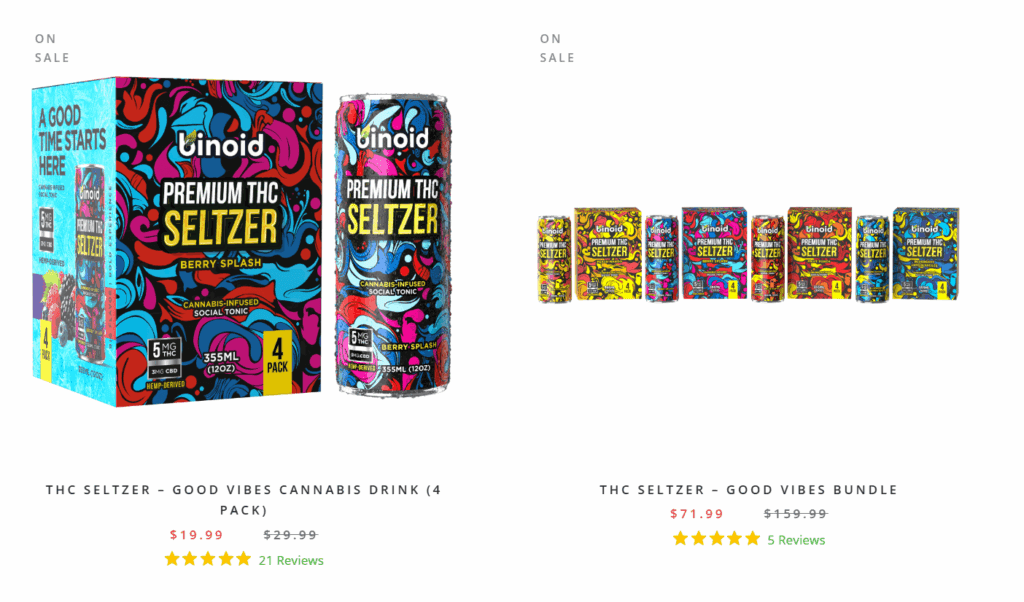
Contender #2: Pre-Packaged Drinks & Beverages
Emerging as the newest and perhaps most sophisticated frontier in the world of wellness consumables, pre-packaged drinks and beverages offer a refreshingly modern and socially integrated way to enjoy a wide array of active ingredients. This category represents a significant evolution in the edibles space, moving beyond solid foods to liquid formulations that prioritize hydration, rapid absorption, and unparalleled convenience. From sparkling seltzers and craft sodas to calming teas and complex mocktails, infused beverages are designed to fit seamlessly into the rhythm of everyday life.
They are at the forefront of the “sober curious” movement and the cultural shift from simple intoxication to the nuanced art of “mood curation.” Leveraging advanced food science technology, these drinks solve the age-old problem of mixing oil-based compounds with water, resulting in a product that is not only delicious and refreshing but also remarkably consistent and predictable in its effects, making them the perfect tool for the modern, mindful consumer.
Pre-packaged drinks and beverages are, at their core, ready-to-drink (RTD) liquid formulations that have been infused with precisely measured doses of specific wellness ingredients. This broad category encompasses an enormous range of products, positioning them alongside other popular RTD staples like hard seltzers, canned cocktails, and kombuchas in the modern consumer’s refrigerator. Unlike powdered mixes that require preparation, these products are sold in their final, consumable form in cans or bottles, offering the highest level of convenience.
They can be broadly categorized into full-volume “beverages” designed for sipping and refreshment, and smaller, highly concentrated “shots” or “elixirs” designed for a rapid, potent effect. The liquid format is the key to their unique properties; it allows for the use of technologies that can lead to faster absorption than solid edibles and provides a perfect vehicle for a wide array of complex flavor profiles. The focus is on creating a holistic experience that combines the functional benefits of the active ingredient with the fundamental pleasure and social normalcy of enjoying a drink.
The creation of a high-quality, shelf-stable, and effective infused beverage is a complex process that takes place at the intersection of beverage manufacturing and pharmaceutical science. It requires specialized equipment and a deep understanding of liquid dynamics, solubility, and preservation techniques to ensure that every can or bottle delivers a consistent, safe, and enjoyable experience. The journey from raw ingredients to a finished, ready-to-drink product involves several critical and technologically advanced steps:
Water Profile and Preparation: The process begins with the very foundation of the beverage: water. This water undergoes extensive treatment, not just filtration to remove impurities, but often deaeration to remove dissolved oxygen (which can degrade flavor and active ingredients) and sometimes re-mineralization, where specific minerals are added back to create a desired “water profile” that enhances the overall taste and mouthfeel.
The Science of Solubility: Active Ingredient Emulsification: This is the most critical and technologically advanced step. Most key wellness ingredients, particularly cannabinoids like Delta 8 THC, are lipophilic (oil-based) and thus hydrophobic (do not mix with water). To overcome this, manufacturers employ a process called Nanoemulsion. Using high-power sonic waves or high-pressure homogenizers, they shatter the cannabinoid oil into microscopic droplets (the “dispersed phase”), which are then encapsulated with a food-grade surfactant or emulsifier (like lecithin or polysorbate). This creates a stable emulsion that allows the tiny oil droplets to be evenly dispersed throughout the water (the “continuous phase”), resulting in a clear, non-oily liquid that is also more readily bioavailable to the body.
Flavor Science and Formulation: Once the water-soluble emulsion is created, the beverage’s unique flavor profile is developed. This is a scientific art form, often involving “flavor houses” that design complex blends of natural and artificial flavors. Beverage scientists work to perfect the delicate balance of sweetness (from sugar, stevia, etc.), acidity (using citric or malic acid to achieve a target pH level), and any inherent bitterness from the active ingredients to create a delicious and harmonious final product.
Large-Scale Infusion and Homogenization: The precisely measured nanoemulsion is then blended into the large, multi-gallon batch of the flavored base liquid. To guarantee perfect consistency from the first can to the last, the entire batch is then subjected to another round of homogenization. This process ensures that the active ingredient is perfectly and evenly distributed, eliminating any possibility of inconsistent dosing within the batch.
Carbonation and Finishing Touches: For sparkling beverages, the finished, chilled liquid is passed through a carbonator, which injects pressurized carbon dioxide to create the desired level of fizziness. Specialty drinks, like nitro cold brew coffee, are infused with nitrogen gas instead, which creates smaller bubbles and a distinctively smooth, creamy texture.
Ensuring Shelf Stability: Pasteurization and Preservation: To ensure the beverage is safe and shelf-stable, it typically undergoes pasteurization, a process of briefly heating the liquid to eliminate any potential pathogens. This can be done via tunnel pasteurization (heating the filled cans) or flash pasteurization (heating the liquid before canning). Additionally, food-grade preservatives like potassium sorbate or natural alternatives like citric acid are often used to inhibit microbial growth and maintain quality over time.
Packaging: Canning or Bottling: The final, finished beverage is then sent to a high-speed, automated packaging line. The cans or bottles are often purged with nitrogen gas to remove any oxygen before being filled with the liquid and immediately sealed and capped. This crucial step prevents oxidation, which can ruin the flavor and degrade the active ingredients. The containers are then labeled with all necessary regulatory, ingredient, and dosage information before being packaged for distribution.
The sheer diversity within the infused drinks and beverages category is one of its most exciting aspects. The liquid format is an incredibly versatile canvas, allowing for a vast range of products that cater to nearly every imaginable taste preference, dietary need, and social occasion. This has led to an explosion of creativity in the market, with brands launching everything from simple, health-focused waters to complex, cocktail-inspired creations:
Seltzers: Riding the wave of the hard seltzer boom, infused seltzers have become one of the most popular formats. They are the minimalist’s choice, typically featuring zero calories and zero sugar, and offering a light, crisp, and highly refreshing experience. The gentle carbonation and subtle hints of natural fruit flavors like lime, grapefruit, or black cherry make them a perfect, guilt-free canvas for active ingredients and an easy entry point for new consumers.
Sodas: For those with a more traditional and nostalgic palate, infused craft sodas offer a comforting and flavorful experience. Brands are reimagining classic soda fountain flavors like cola, root beer, orange cream, and ginger ale, but with a modern, functional twist. These products combine the familiar comfort of a sweet, fizzy soda with the novel effects of cannabinoids or adaptogens, offering a playful and indulgent treat.
Waters: At the simplest and healthiest end of the spectrum, infused waters focus on the core benefit of hydration. These can be found in both still and sparkling varieties and are often enhanced with just a hint of natural botanical or fruit essence, like cucumber mint or lemon ginger. They appeal directly to the health-conscious consumer who wants the functional benefits of an active ingredient without any added sugars, calories, or artificial flavors.
Lemonade & Tea: These classic, universally beloved beverages are perfect vehicles for infusion due to their strong, pleasant flavor profiles. Infused lemonades can be sweet, tart, and incredibly refreshing on a hot day. Infused teas, available in varieties like calming chamomile, classic black tea, or antioxidant-rich green tea, offer a more nuanced and traditional experience. Both are familiar, highly accessible, and excellent at masking any undesirable flavors from the botanical extracts.
Coffee: This innovative category combines the world’s most popular stimulant with other functional ingredients to create a unique “stacked” effect. Infused coffee is typically sold as shelf-stable canned cold brews or nitro cold brews. These products often pair the natural energy of caffeine with the balancing properties of CBD to create a “calm focus” state, or they may be infused with cognitive-supporting functional mushrooms like Lion’s Mane to enhance the mental clarity of the coffee experience.
Mocktails: Designed for the sophisticated palate and the modern socialite, infused mocktails are complex, non-alcoholic beverages crafted to replicate the experience of a high-end cocktail. They are not simple juice mixers; they often feature layered and nuanced flavors from botanical extracts, artisanal bitters, complex syrups (shrubs), and citrus oils. Infused with ingredients like Delta 8 THC or calming adaptogens, they provide a relaxing, social buzz without the alcohol, making them perfect for a refined evening.
Non-Alcoholic Drinks: This broader category includes the emerging and exciting products of infused non-alcoholic beers and dealcoholized wines. These beverages undergo the full fermentation process to develop their characteristic flavors, after which the alcohol is gently removed. The infusion of cannabinoids or other botanicals then adds back the “social ritual” and relaxing component, making them an ideal one-to-one replacement for their alcoholic counterparts.
Recommended products
A significant portion of the wellness beverage market is dedicated to products fortified with essential vitamins and minerals. These drinks are designed to support overall health and hydration, leveraging the convenience of a ready-to-drink format to help consumers meet their daily nutritional needs. They are often marketed as a healthier alternative to sugary sodas and fruit juices, providing functional benefits beyond simple thirst-quenching.
This category includes a wide range of “vitamin waters,” which are typically non-carbonated and come in various fruit flavors, each fortified with a specific blend of vitamins like C, B3, B5, B6, and B12, along with antioxidants. Another popular segment is electrolyte-enhanced beverages. These are formulated to aid in hydration by replenishing the key minerals—such as sodium, potassium, and magnesium—that are lost through sweat during exercise or on a hot day. They are popular among athletes and active individuals but are also beneficial for everyday hydration and wellness.
The largest and most dynamic sector of the infused beverage market is unquestionably those containing hemp-derived cannabinoids. These drinks have revolutionized the way people consume cannabinoids, offering a method that is not only smoke-free but also socially acceptable and incredibly precise in its dosing. The key innovation that makes these beverages possible is Nanoemulsion technology, which creates a water-soluble form of cannabinoid oils that can be easily mixed into any liquid base.
This technology also increases the bioavailability of the cannabinoids, allowing for a faster onset of effects compared to traditional solid edibles. The range of cannabinoids featured in these drinks is vast, including non-intoxicating options like CBD for general wellness and balance, CBG for its soothing properties, and CBN for relaxation. The market also includes a wide variety of intoxicating options, such as Delta 8 THC for a milder euphoric experience and federally compliant Delta 9 THC for the classic, potent effects.
Kratom-infused beverages, often sold as concentrated “shots” or brewed teas, offer a convenient way to experience the unique, dose-dependent effects of this Southeast Asian botanical. The active compounds in Kratom, primarily Mitragynine, can produce stimulating and energizing effects at lower doses, making a Kratom shot a popular choice for a morning or mid-day boost.
At higher doses, the effects become more sedating and relaxing, making a brewed Kratom tea a common choice for winding down in the evening. The beverage format allows for easy consumption and relatively rapid absorption compared to raw powder, and different drinks are often formulated with specific Kratom strains (Red, Green, or White vein) to target a desired experience, from energetic to tranquil.
Kava, a traditional ceremonial root from the Pacific Islands, is renowned for its calming and sociability-promoting properties, making it a perfect fit for the beverage format. Kava-infused drinks are rapidly gaining popularity as a non-alcoholic alternative for social situations. The active compounds, kavalactones, are known to promote a sense of mental relaxation and ease without significant cognitive impairment, helping to reduce everyday tensions and encourage conversation. Packaged Kava drinks, from sparkling tonics to concentrated shots, provide a simple and palatable way to enjoy these effects, offering a “social buzz” that can be a welcome substitute for alcohol for those seeking to unwind and connect with others in a more mindful way.
A niche but fascinating category is beverages infused with extracts from the Amanita mushroom. It is critically important to distinguish these from psilocybin-containing “magic mushrooms.” Amanita beverages contain the compound muscimol (derived from the conversion of ibotenic acid in the mushroom) and provide a unique, legal psychoactive experience that is more dissociative, sedative, and dream-like. These drinks, often sold as small, potent elixirs or tonics, are designed for users seeking to explore altered states of consciousness. The effects can include a warped sense of time and perception, and due to their potency, they are intended to be consumed in small, carefully measured doses in a safe and comfortable environment.
Functional mushroom-infused beverages have exploded in popularity as part of the broader wellness and nootropics movement. These drinks are non-psychoactive and are designed to be consumed daily to support various aspects of health and cognitive function. Mushroom coffee is one of the most popular products, often featuring a blend of coffee with extracts like Lion’s Mane to support focus and memory, and Cordyceps to support energy and stamina. Other products include mushroom teas and wellness shots that might contain Reishi for its adaptogenic, relaxation-promoting properties, or Chaga and Turkey Tail for their high antioxidant content and immune-supportive benefits. These beverages offer a simple way to incorporate the power of these celebrated fungi into one’s daily routine.
The overall effects of pre-packaged drinks and beverages are defined by their unique place in the edibles spectrum. Thanks to the use of advanced nanoemulsion technology, which makes the active ingredients more bioavailable, the onset of effects from a liquid can be significantly faster than from a solid food product. While a traditional brownie might take an hour or more to kick in, the effects of an infused beverage can often be felt in as little as 15 to 30 minutes. However, this faster onset is often accompanied by a shorter overall duration compared to solid edibles. The experience from a drink might last for 2 to 4 hours, whereas a brownie’s effects could last for 6 hours or more. This creates a unique “experiential curve” that many find ideal—it’s faster acting and more predictable than a traditional edible, but longer-lasting and more body-focused than inhalation, offering a desirable middle ground for many users.
Pros & Cons
The rise of infused drinks and beverages offers a modern, convenient, and refreshing new way to engage with wellness ingredients, but this innovative format comes with its own specific set of advantages and trade-offs. Their strengths often lie in their speed, social adaptability, and precise dosing, while their weaknesses can relate to their duration, ingredients, and storage needs. A clear-eyed view of these pros and cons is essential for determining if this liquid option is the best choice for you.
Pros:
Faster Onset Than Traditional Edibles: Again, due to the use of Nanoemulsion technology which makes the active ingredients more bioavailable, infused beverages typically have a much faster onset time than solid edibles like gummies or baked goods. This quicker feedback, often within 15-30 minutes, reduces the long waiting period and makes for a more predictable and controllable experience.
Superb for Social Situations: Drinks are a natural part of almost any social gathering. An infused beverage allows a user to participate in the social ritual of drinking without any of the associated odor or paraphernalia of flower. It is an incredibly discreet and socially acceptable way to consume, fitting in perfectly at parties, concerts, or dinners.
An Excellent Alcohol Alternative: For a growing number of people who are “sober curious” or simply wish to reduce their alcohol intake, infused beverages offer a fantastic one-to-one replacement. They provide a sophisticated, adult beverage option that can produce a relaxing “buzz,” helping users to unwind and socialize without the negative effects associated with alcohol.
Refreshing, Hydrating, and Flavorful: Unlike many other consumption methods, infused drinks serve the dual purpose of delivering an active ingredient while also providing hydration. On a hot day or after physical activity, a chilled infused beverage can be incredibly refreshing. The vast array of available flavors, from seltzers to teas, makes for a genuinely enjoyable taste experience.
Extremely Precise and Consistent Dosing: Reputable infused beverages offer one of the most precise and reliable dosing methods available. Each can or bottle is formulated to contain an exact milligram amount of the active ingredient, which is homogenized throughout the liquid. This means the consumer knows exactly what they are getting in every serving, leading to a highly predictable and repeatable experience.
Low-Calorie and Sugar-Free Options Abound: The beverage market is highly attuned to modern dietary preferences. This means there is a huge variety of low-calorie, zero-calorie, and sugar-free options available, particularly in the seltzer and infused water categories. This makes them an ideal choice for health-conscious consumers who want to avoid the sugars and fats found in many solid edibles.
Ultimate Grab-and-Go Convenience: Pre-packaged drinks require absolutely no preparation. They are the epitome of a “ready-to-drink” (RTD) product. This effortless convenience is perfect for a busy, on-the-go lifestyle, allowing users to simply grab a can from the fridge and enjoy it wherever they are.
Pairs Naturally with Food: Just like a traditional beverage, infused drinks can be enjoyed alongside a meal. A cannabis-infused lemonade can complement a summer barbecue, or a CBD-infused sparkling water can be enjoyed with dinner. This allows the experience to be integrated naturally into culinary routines in a way that is less common for other formats.
No Inhalation Required: For the large segment of the population that wishes to avoid smoking or vaping due to respiratory health concerns or personal preference, beverages offer a perfect solution. They are a completely smoke-free and lung-friendly way to enjoy the benefits of various botanical ingredients.
A Less Intense, More “Sessionable” Experience: Because the duration of effects from a drink is often shorter than from a solid edible, many users find the experience to be less intense and more manageable or “sessionable.” This means one might be able to have a second drink later in the evening, similar to how one might consume alcoholic beverages, offering more control over the arc of a social event.
Cons:
Shorter Duration Than Solid Edibles: The trade-off for a faster onset is often a shorter overall duration of effects. While a brownie might provide a 6+ hour experience, the effects from a drink may only last 2-4 hours. For users seeking a long-lasting, single-dose experience to carry them through a full day or night, this can be a significant disadvantage.
Can Contain Sugars or Artificial Sweeteners: While many healthy options exist, a large portion of the infused beverage market, particularly sodas and juices, can be high in sugar, high-fructose corn syrup, or artificial sweeteners. Consumers must be diligent in reading labels to ensure the product aligns with their dietary goals and avoid unwanted additives.
Less Shelf-Stable Once Opened: Unlike a bag of flower or a container of gummies, once a carbonated beverage is opened, it must be consumed relatively quickly before it goes flat. This means the user is generally committed to consuming the full dose in one session, offering less flexibility than a product that can be easily resealed and saved for later.
Potential for a “Weedy” Aftertaste: While flavor technology has improved dramatically, the Nanoemulsions used to make cannabinoids water-soluble can sometimes impart a slightly bitter or “weedy” aftertaste to the beverage. Some consumers are more sensitive to this than others, and it can detract from the overall taste experience in some products.
Risk of Overconsumption Due to “Drinkability”: Because these beverages are often refreshing and delicious, there can be a temptation to drink them too quickly or to have more than one in a short period, just as one might with a regular soda. This can lead to “dose stacking,” where a user accidentally consumes a much higher dose than intended, resulting in an uncomfortably intense experience.
How to Go About Choosing Which Option
Navigating the choice between THCA flower and a wellness-intended beverage is not about finding a definitive winner, but about an act of personal alignment. It is a decision that asks you to consider your own rhythm, social habits, and desired experience, ultimately choosing the form that best resonates with your lifestyle. Are you drawn to the dry, elemental ritual of flower, an experience defined by breath and immediacy? Or do you prefer the fluid refreshment of a modern beverage, an experience that flows seamlessly into social situations? By honestly evaluating your priorities, you can move beyond a simple product choice and consciously curate a moment of wellness that feels perfectly suited to you.
To help illuminate this decision-making process, let’s break it down into the key factors that differentiate these two unique modalities. By reflecting on your preferences within each of these areas, a clear choice will likely emerge:
The Experiential Timeline (Onset and Duration): This is the most critical distinction. Are you seeking an experience with an immediate onset and a shorter duration, perfect for a quick transition into relaxation after work? If so, the near-instantaneous effects and 1-3 hour duration of inhaled THCA flower is your answer. Or, do you prefer a faster-acting edible experience without the long wait of a brownie, one that kicks in within 30 minutes and lasts for a few hours? If this “middle ground” of speed and duration sounds appealing, the unique experiential curve of an infused beverage is the ideal fit.
Social Context (The Private vs. The Public): Consider where you plan to enjoy this product. Is it for a quiet evening at home, where you can engage in the private, hands-on ritual of preparing flower without any concern for odor or appearance? In that case, flower is a wonderful choice. Or, is it for a social gathering—a party, a barbecue, a concert—where discretion and the ability to blend in are paramount? The unparalleled social acceptability of holding a canned beverage makes it the undeniable champion for public or group settings.
Dosing Style and Philosophy: How do you prefer to control your intake? Do you enjoy the tactile, in-the-moment control of titration, taking one puff at a time and gauging the effects as you go? This is the art of consuming THCA flower. Or, do you value the scientific precision and predictability of a clearly labeled dose? The “what you see is what you get” nature of a beverage that explicitly states “10mg of CBD” on the can offers a level of consistency and peace of mind that many users prefer.
Flavor and a Matter of Palate: What kind of taste experience are you looking for? If you are a botanical enthusiast who appreciates the complex, earthy, citrusy, and piney notes of different cannabis strains, then the terpene-rich flavor of vaped or smoked flower is a primary part of the appeal. If, however, you find those flavors to be unappealing and would much rather enjoy a crisp, refreshing fruit seltzer or a sweet, nostalgic soda, then the culinary-focused world of infused beverages will be far more enjoyable to your palate.
|
Feature |
THCA Flower |
Pre-Packaged Drinks & Beverages |
|---|---|---|
|
Form |
Raw, dried botanical flower |
Ready-to-drink (RTD) liquid |
|
Onset Time |
Very Fast (2-10 minutes) |
Fast for an Edible (15-45 minutes) |
|
Duration of Effects |
Shorter (1-3 hours) |
Medium (2-4 hours) |
|
Dosing Control |
High real-time control (titration) |
Highly precise and consistent per can |
|
Social Context |
Low (private, requires gear, has odor) |
Highest (public, discreet, socially normal) |
|
Primary Purpose |
Ritual, botanical exploration, immediate effects |
Refreshment, social lubrication, convenient dosing |
|
Ingredients |
Single ingredient (the plant) |
Liquid formulation (water, flavors, emulsifiers) |
|
Dietary Impact |
None (no calories, sugar, or fat) |
Varies (many low-calorie/zero-sugar options) |
|
Flavor Profile |
Natural, earthy, strain-dependent |
Culinary, refreshing, vast flavor variety |
|
Best For |
Users wanting fast effects, control, and a natural product |
Users wanting a social, refreshing, and fast-acting edible experience |
Choosing Your Element: Smoke, Sips, and Serenity
In the grand tapestry of wellness, the choice between the ethereal vapor of a THCA flower and the life-giving essence of a beverage is a choice of personal elements. One path invites an interaction with air and breath, a ritual that is immediate, personal, and deeply connected to the raw character of the plant itself. It is an experience defined by the senses—the aroma, the taste, the tactile process—a direct conversation with a botanical ally. The other path offers an engagement with water, the fundamental element of life, integrating wellness into the simple, vital act of drinking. It is an experience defined by its fluidity, its social grace, and its ability to refresh and relax in equal measure.
There is no superior choice, only a more resonant one. The goal is not simply to consume, but to consciously select the form that best quenches your unique thirst for balance, bliss, and well-being.

